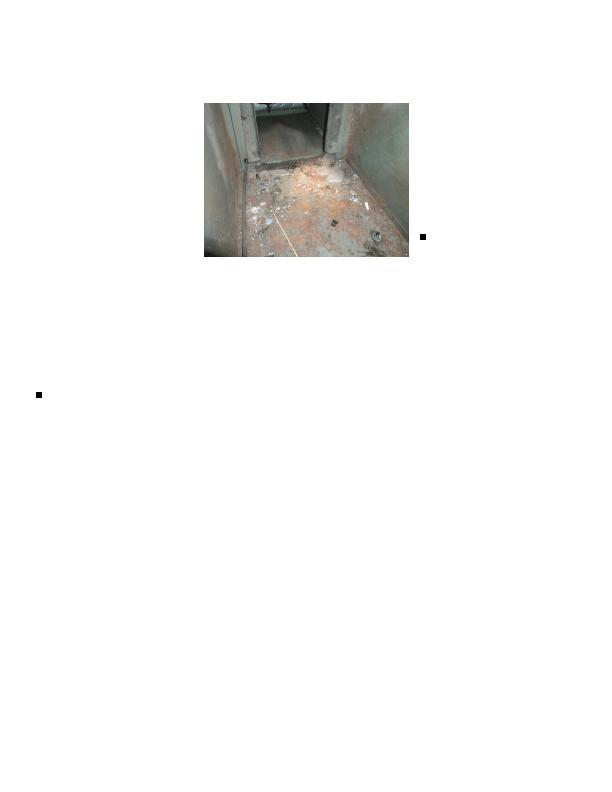
violations, complaints issued through local and
are contaminated with dioxin, and to determine the
state agencies, and the involvement of political
representatives.
floodplain areas.
An exposure investigation collects information on spe-
the Michigan Department
cific human exposures through
of Environmental Quality
biologic sampling, personal
(MDEQ) indicates that
monitoring, related environmen-
emissions of chlorine,
tal assessment, and exposure-
dose reconstruction. ATSDR
staff members have conducted
two exposure investigations in
not above state screening
Michigan, including the follow-
levels, neighbors of the
facility allege that they are
ing recent example.
experiencing adverse health
Mercury Spill--In May
effects and attribute those
2002, staff from the Michigan
effects to process emissions.
Department of Community
Mercury release in a home furnace on
In a health consultation
Health (MDCH), the Genesee
Princeton Avenue in Flint.
released in March 2003,
County Health Department,
the site is categorized as an indeterminate public
and the U.S. Environmental Protection Agency
health hazard on the basis of community health
(EPA) responded to a mercury release at a home on
concerns and available stack testing data. Further
Princeton Avenue in Flint. About 6 fluid ounces of
characterization of stack emissions during odor
mercury were found in the home's forced-air furnace
events is necessary to determine any correlation with
by a repair technician. Because the mercury, whose
health effects reported by the community.
source is unknown, was in the unit for an unknown
Midland--In May 2001, a Midland resident and
length of time, the potential exists for significant
two Michigan-based environmental organizations
chronic inhalation exposure.
petitioned ATSDR to conduct a public health
Breathing-zone concentrations of mercury were
assessment of dioxin contamination in Midland and
several times greater than the recommended ATSDR
in adjacent communities.
action level of 1 microgram per cubic meter (g/m3).
A health consultation released for public comment
MDCH considered the situation an urgent public
health hazard requiring immediate action.
Midland area. The data necessary to determine
Residents of the home were evacuated during clean-
whether dioxin-contaminated soil in the Midland
area poses a public health risk are not available;
the home's indoor air was tested using a National
therefore, the site poses an indeterminate public
Institute of Occupational Safety and Health 8-hour
health hazard. Further site-specific evaluation
test for mercury vapor concentrations in air. Test
is necessary to determine whether dioxin
results indicated that mercury concentrations were
contamination in Midland soil presents a public
less than the action level and the home was cleared
health hazard.
for occupancy. No public health hazard currently
A second health consultation released for public
exists in this home.
comment in March 2002 addresses floodplain soil
Health Education and Community Activities
contamination in the Tittabawassee River watershed
Michigan has been a participant in ATSDR's coopera-
downstream from the city of Midland. The data
tive agreement program since 1987. Under this program,
necessary to determine whether dioxin-contaminated
MDCH has received funding and technical assistance
floodplain soil in the Tittabawassee River watershed
for the development of community education and activi-
poses a public health risk are not available;
ties associated with human exposure to hazardous sub-
therefore, the site poses an indeterminate public
stances in the environment. In the last 2 years, MDCH
health hazard. Additional soil sampling is necessary
has developed more than 25 educational tools related to
to determine whether nearby residential properties


 Previous Page
Previous Page
